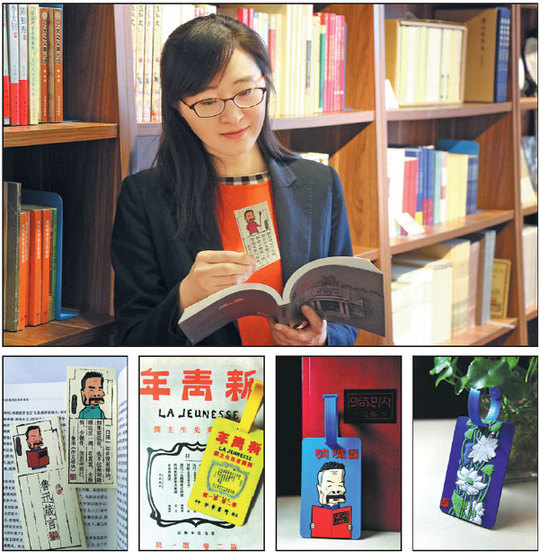Designing Culture
By Liu Chang, Zhai Xiang and Cheng Zhuo (China Daily) Updated: 2017-03-01 07:49The Red Mansion serves as a microcosm of how China's creative industry is flourishing. Liu Chang, Zhai Xiang and Cheng Zhuo report.
The Red Mansion has remained a magnet for youth for a century.
The four-story, redbrick icon of China's New Culture Movement has since its 1918 construction housed Peking University's library, school of arts, and presidents' and deans' offices. It has also housed maverick academics and revolutionaries who made history in the early 20th century, including Cai Yuanpei, Hu Shi, Li Dazhao, Chen Duxiu and Lu Xun.
Now, creative cultural products are bringing it back to life.
Peking University was a New Culture Movement stronghold in the 1910s and '20s. The movement tried to address China's ills through democracy and science, as Marxism rapidly spread across the country.
The New Culture Movement Memorial and the Beijing Lu Xun Museum merged in 2014, and creative endeavors were initiated the following year.
The museum's souvenir sales surged from a few thousand yuan two years ago to 70 times last year. That's partly because management introduced a new design program.
Liu Xin examined the histories of various museum displays to develop items that wed artistry and practicality.
The 31-year-old designer took inspiration from a 1936 Japanese caricature of 20th-century literary luminary Lu Xun that honored his "extraordinary will".
Hundreds of millions of people have studied Lu's works, beginning with elementary school textbooks.
Liu used the caricature as inspiration for four new images of Lu that depict him reading a book, delivering a speech, marching and fighting printed on bookmarks, rulers and pencil cases.
In the battle scene, for instance, Lu brandishes a calligraphy brush that's as tall as a person. It depicts him using writing as a weapon.
Other products take inspirations from his quotes.
"I see the ingenuity in these products," visitor Zhang Yi says.
"Over the years, I have gradually come to understand the works of Lu Xun that I learned at school. The images here make him appear accessible and they have prompted me to reread his books."
The project's leader, Li Zhanqi, says the essential goal is to create social benefits for everyday consumers.
More than 40 percent of the visitors are students. Liu often lingers around exhibitions to view visitors' reactions to her work.
Her most popular creations are postcards and stationary that cost between 10 and 30 yuan ($1.4-$4.2).
The Red Mansion also sells products based on Peking University's logo.
"We strive for affordable quality and cultural resonance," Li says.
Liu recalls a Peking University alumna, who was more than 90 years old and had returned from the United States, visited to see her old classroom.
The woman left with several items with Liu's designs based on the school's logo.
Such products are gaining popularity as China's creative industry flourishes.
Beijing's Palace Museum, for instance, made more than 1 billion yuan selling its 8,700 branded souvenirs in 2015.
The State Council, China's Cabinet, said last March the country should "develop the creative cultural industry" with sensitivity, practicality and originality.
These products are gaining ground overseas, too.
Liu's were a hit at this year's Frankfurt Paperworld. German dealers approached her at the major international stationary fair.
She's glad her efforts have contributed to promoting Chinese culture and "offer an opportunity for the museum to present itself to the public".
"I hope our memorial can help people understand the history of Lu Xun and the New Culture Movement," says Li Zhanqi.
"And I hope that when visitors leave, they take souvenirs they cherish."
|
Liu Xin (above), a designer from the New Culture Movement Memorial and Beijing Lu Xun Museum, helps create popular souvenirs (below), including bookmarks and baggage cardholders.Photos By Xinhua And Provided To China Daily |
- 'Cooperation is complementary'
- Worldwide manhunt nets 50th fugitive
- China-Japan meet seeks cooperation
- Agency ensuring natural gas supply
- Global manhunt sees China catch its 50th fugitive
- Call for 'Red Boat Spirit' a noble goal, official says
- China 'open to world' of foreign talent
- Free trade studies agreed on as Li meets with Canadian PM Trudeau
- Emojis on austerity rules from top anti-graft authority go viral
- Xi: All aboard internet express












